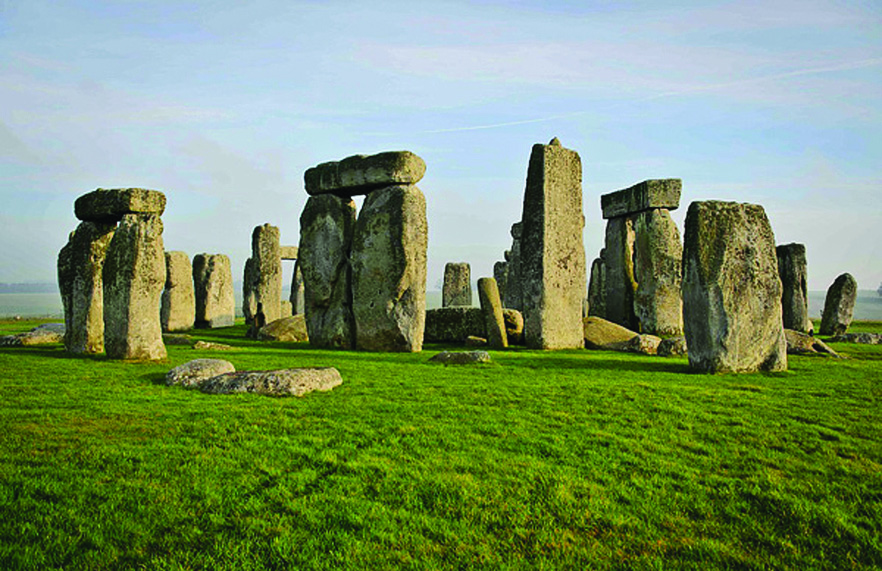Ancient riddle of standing stones 'solved'
By ANGUS McNEICE in London | China Daily Global | Updated: 2022-03-04 10:10

It has baffled archaeologists for centuries, but the enigma of Stonehenge may have finally been solved, after a British researcher calculated precisely how the prehistoric monument functioned as a solar calendar.
Stone Age people began construction of the mystical arrangement of more than 80 stones, each weighing between 2 and 30 metric tons, around 5,000 years ago, and added to the site during the following millennium, according to various estimates.
The iconic landmark in Wiltshire, England, is thought to have played several roles of spiritual and celestial significance, and scientists have long posited that one of its functions was as a solar calendar, since the main axis of the structure is aligned with the summer and winter solstices.
But the exact way the stone construction tracked the days, weeks, and months of the year remained a mystery-until now.
In a new study, Bournemouth University professor and noted Stonehenge expert Timothy Darvill shows how the site plotted a 365.25-day year.
The calendar had 12 monthly cycles of 30 days, represented by the 30-stone outer ring, called the Sarsen Circle, and each of these months was divided into three 10-day weeks.
An additional five days, plus a further day each leap year, was needed to make up the solar year. To solve this, the Neolithic constructors added an extra five-day period, known as an intercalary month, in the form of the Trilithon Horseshoe, which is made up of five components situated prominently in the center of the monument.
Darvill said the four Station Stones outside the Sarsen Circle provided markers that notched up a leap day every four years.
Previous discoveries of human remains at Stonehenge led some archaeologists to suggest it primarily served as a burial site and a place to pay homage to ancestors. Now, its status as a time-keeping device has been confirmed, Darvill says it is likely that Stonehenge played an important role in scheduling harvest festivals and other cyclical rituals.
"Finding a solar calendar represented in the architecture of Stonehenge opens up a whole new way of seeing the monument as a place for the living," said Darvill, whose study was published in the journal Antiquity. "(It was) a place where the timing of ceremonies and festivals was connected to the very fabric of the universe and celestial movements in the heavens."
Darvill said solar calendars were widely used in ancient Egypt, and the structures were also developed in the Eastern Mediterranean, around 3000 BC, suggesting the builders of Stonehenge may have been influenced by other cultures. The possibility of such cultural exchange is backed up by the previous discovery of an ancient grave located 5 kilometers from Stonehenge where the remains of the so-called Amesbury archer were found. He is thought to have lived around 2300 BC, and dental studies suggest he was born in Central Europe and moved to the British Isles as a teenager.
Darvill hopes further research into ancient DNA and archaeological artifacts could reveal further connections between cultures.
























